Abstract
The effects of an acute, artificially simulated increase in body weight on exercise performance were examined in 14 patients of normal weight (mean (SD) body mass index 22.3 (2.7)), age 61 (8) years) with chronic obstructive airways disease (FEV1 1.2 (0.5) 1; vital capacity (VC) 2.9 (0.6) 1), and in six normal subjects with similar age and sex distribution. The patients performed a six minute walking test and a symptom limited step climbing test both with and without an additional 10 kg weight (two leaded aprons). The normal subjects performed a step test with and without the additional weight. Ventilation (VE) and oxygen consumption (VO2) were measured during step climbing. Resting spirometric values were not altered by the additional weight. In the patients the median number of steps climbed fell from 67.5 when they were unweighted to 44.5 when they were weighted. Mean VE and VO2 were increased during weighted step climbing by 14% and 13% but the maximum levels of VE and VO2 achieved were similar during unweighted and weighted exercise (VE 36.8 (8.6) and 37.3 (10.2) 1 min-1, VO2 1.35 (0.3) and 1.41 (0.4) 1 min-1 respectively). The normal subjects were readily able to complete 150 steps both with and without the additional weight. In the patients the six minute walking distance fell only slightly with the extra weight, from 554 (SD 61) to 540 (62) m. A subsidiary study was carried out in six healthy younger subjects in which VE and VO2 were measured during a 5.6 km/h six minute treadmill walk at zero incline. The additional weight did not alter VE or VO2 during exercise. In conclusion, a small acute increase in body weight substantially worsened the already reduced "uphill" exercise performance in patients with chronic obstructive airways disease because of its effect on ventilation and oxygen consumption. These results suggest that modest weight loss might benefit patients with chronic obstructive airways disease even though they may be only slightly above their ideal body weight.
Full text
PDF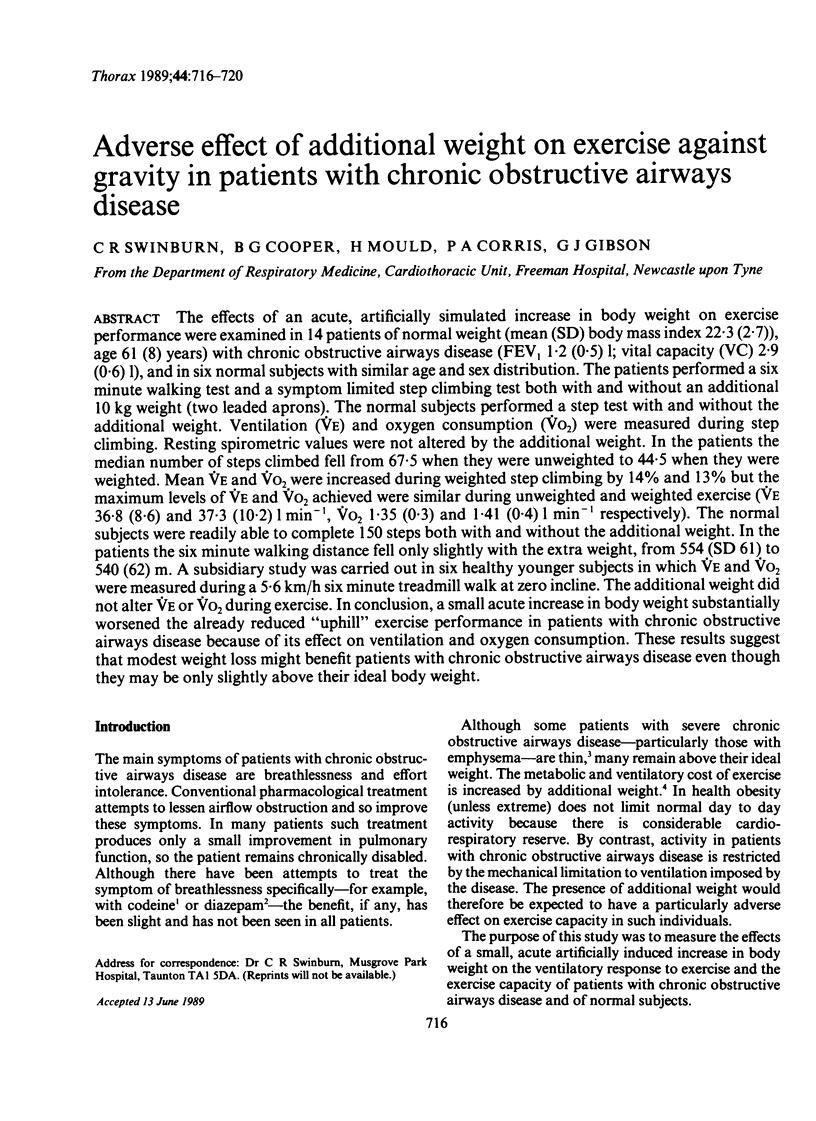
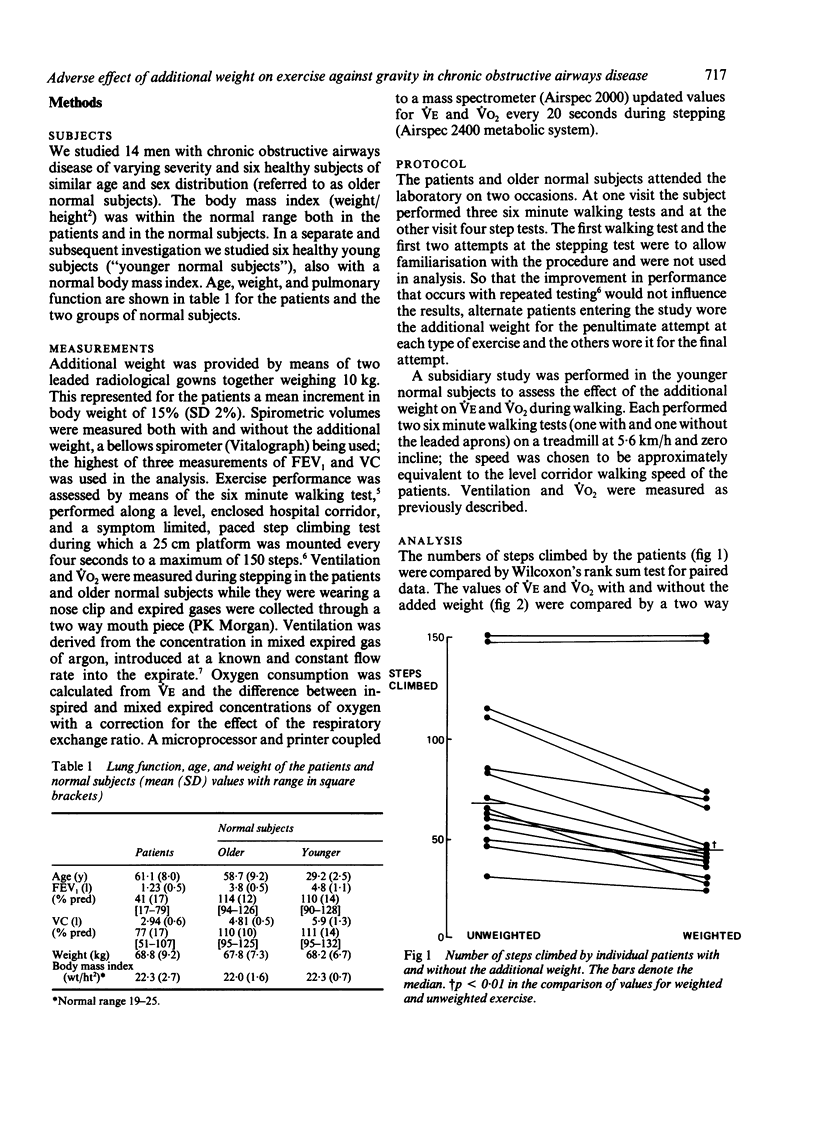
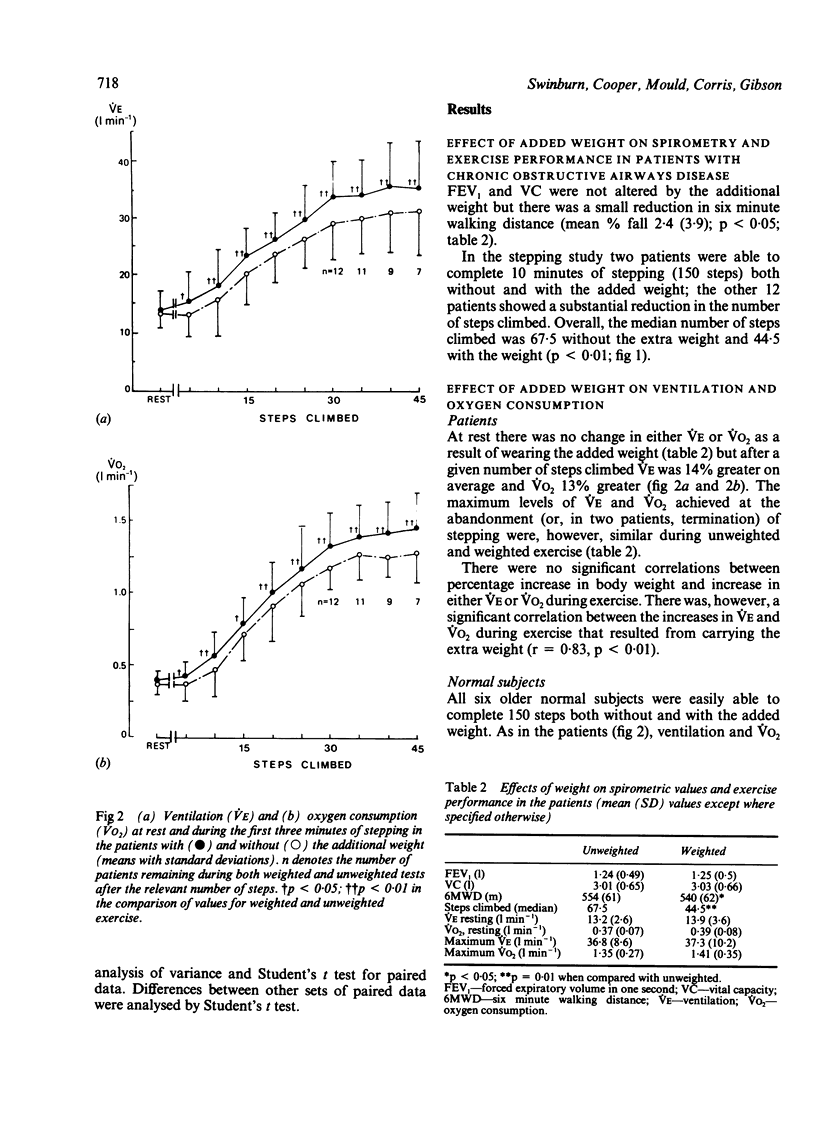
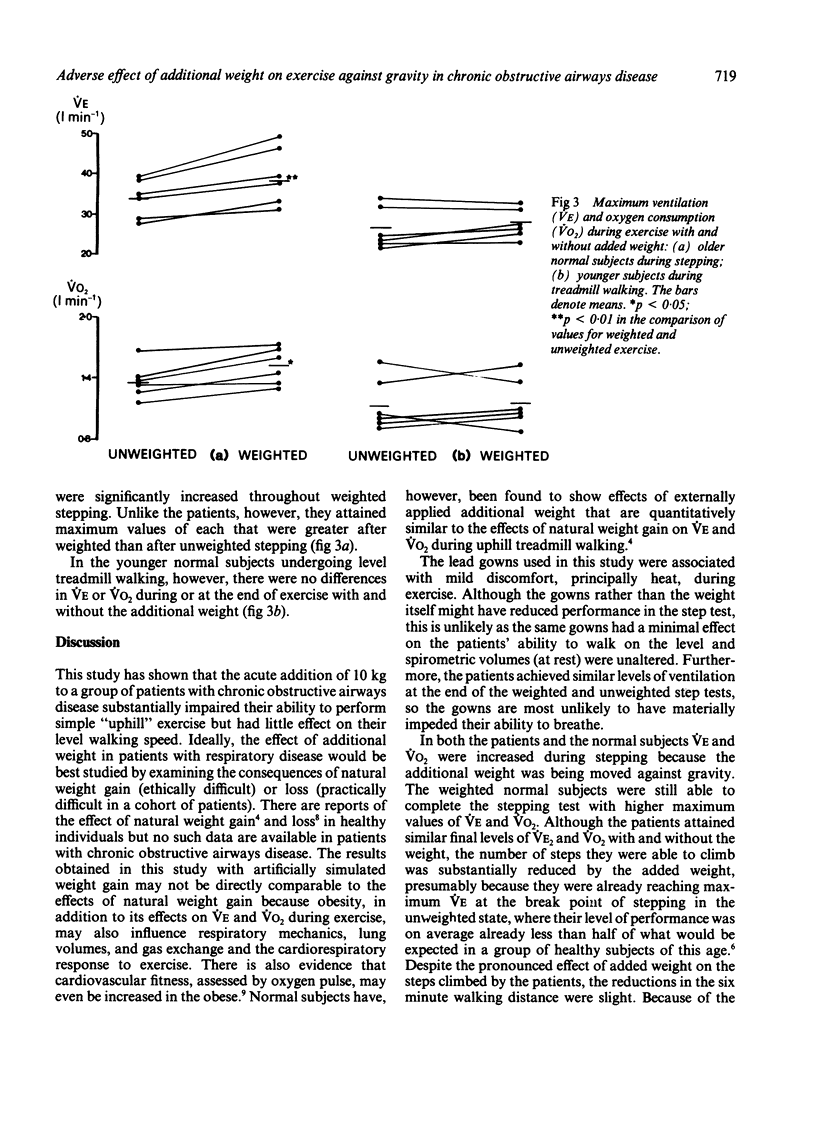
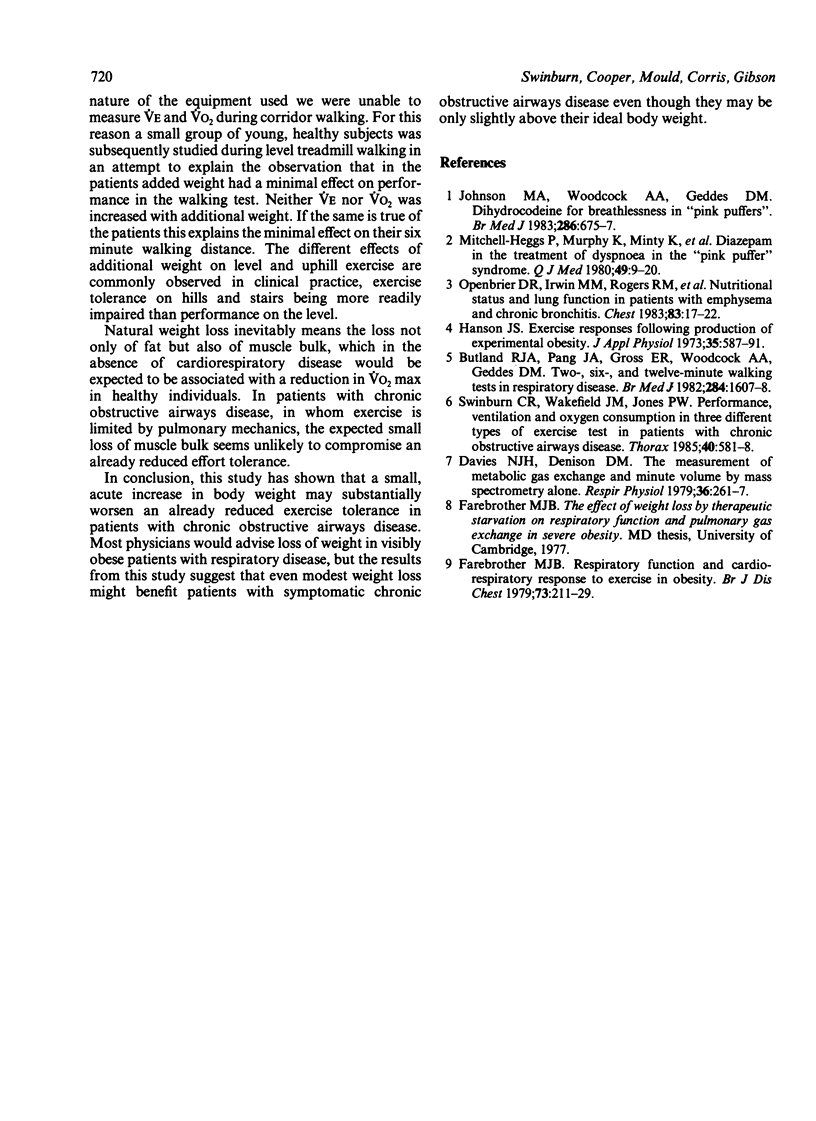
Selected References
These references are in PubMed. This may not be the complete list of references from this article.
- Butland R. J., Pang J., Gross E. R., Woodcock A. A., Geddes D. M. Two-, six-, and 12-minute walking tests in respiratory disease. Br Med J (Clin Res Ed) 1982 May 29;284(6329):1607–1608. doi: 10.1136/bmj.284.6329.1607. [DOI] [PMC free article] [PubMed] [Google Scholar]
- Davies N. J., Denison D. M. The measurement of metabolic gas exchange and minute volume by mass spectrometry alone. Respir Physiol. 1979 Feb;36(2):261–267. doi: 10.1016/0034-5687(79)90029-x. [DOI] [PubMed] [Google Scholar]
- Farebrother M. J. Respiratory function and cardiorespiratory response to exercise in obesity. Br J Dis Chest. 1979 Jul;73(3):211–229. [PubMed] [Google Scholar]
- Hanson J. S. Exercise responses following production of experimental obesity. J Appl Physiol. 1973 Nov;35(5):587–591. doi: 10.1152/jappl.1973.35.5.587. [DOI] [PubMed] [Google Scholar]
- Johnson M. A., Woodcock A. A., Geddes D. M. Dihydrocodeine for breathlessness in "pink puffers". Br Med J (Clin Res Ed) 1983 Feb 26;286(6366):675–677. doi: 10.1136/bmj.286.6366.675. [DOI] [PMC free article] [PubMed] [Google Scholar]
- Mitchell-Heggs P., Murphy K., Minty K., Guz A., Patterson S. C., Minty P. S., Rosser R. M. Diazepam in the treatment of dyspnoea in the 'Pink Puffer' syndrome. Q J Med. 1980 Winter;49(193):9–20. [PubMed] [Google Scholar]
- Openbrier D. R., Irwin M. M., Rogers R. M., Gottlieb G. P., Dauber J. H., Van Thiel D. H., Pennock B. E. Nutritional status and lung function in patients with emphysema and chronic bronchitis. Chest. 1983 Jan;83(1):17–22. doi: 10.1378/chest.83.1.17. [DOI] [PubMed] [Google Scholar]
- Swinburn C. R., Wakefield J. M., Jones P. W. Performance, ventilation, and oxygen consumption in three different types of exercise test in patients with chronic obstructive lung disease. Thorax. 1985 Aug;40(8):581–586. doi: 10.1136/thx.40.8.581. [DOI] [PMC free article] [PubMed] [Google Scholar]


